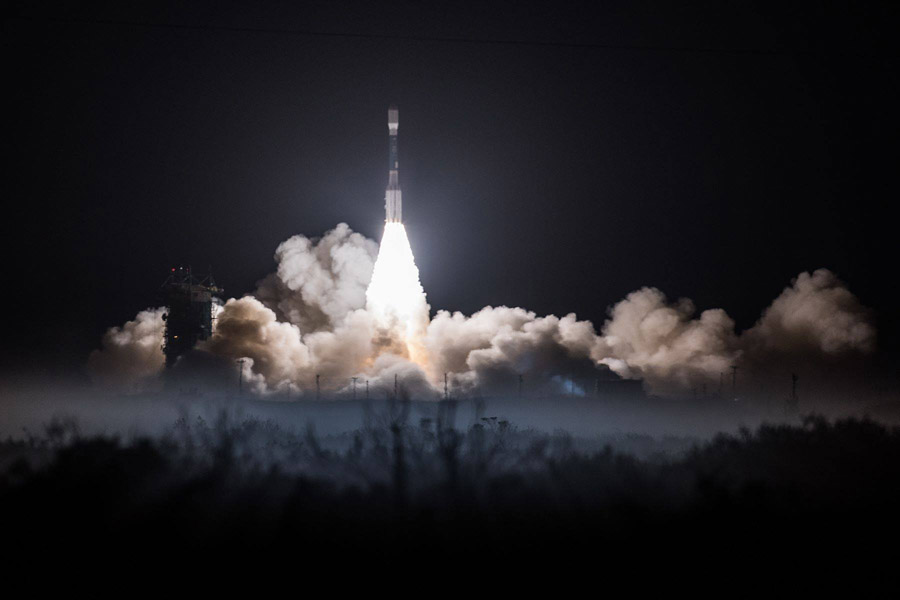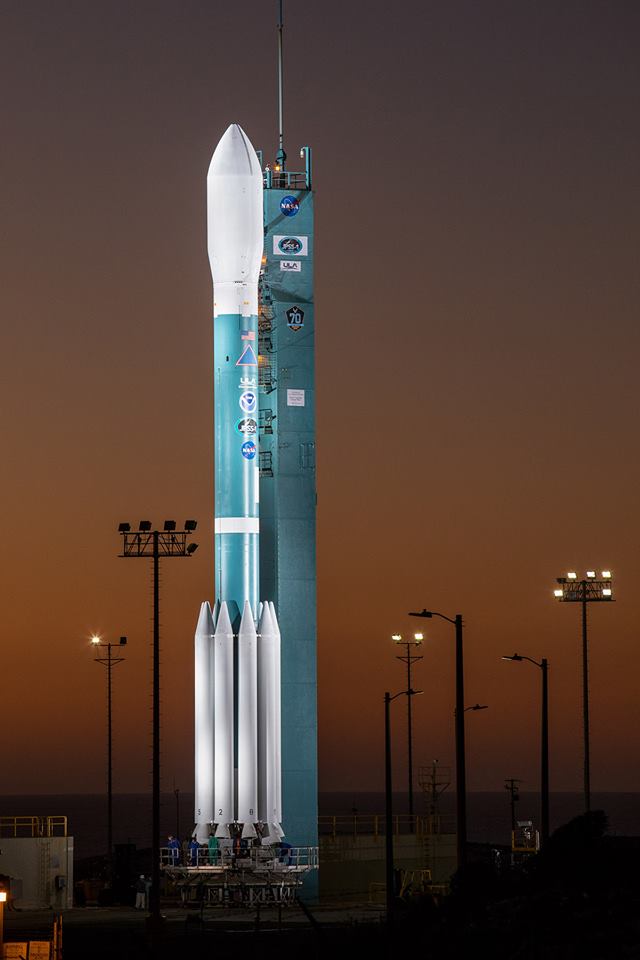I’m glad I stayed up for this one – early this morning, 1:47 Pacific Time (3:47 Central Time for me) marked the launch of the NASA / NOAA Joint Polar Satellite System 1, or JPSS-1, weather satellite. As the name implies, JPSS-1 is the first of a new set of polar orbiting weather satellites which will help to greatly improve weather data gathering for the United States.
For those curious, this was another launch from Vandenberg Air Force Base, as is standard for United States polar orbit launches. It’s also worth noting this launch was delayed repeatedly for several days thanks to issues of upper level winds and, of course, someone operating a boat downrange from the launch site!

The launch of JPSS-1 on the second to last Delta II rocket!
A pretty standard payload, sure, but what makes this launch special is the fact that the booster that carried JPSS-1 into orbit was a Delta II – the second to last Delta II to fly. This rocket system is the last of the “big 3” American booster families (Atlas, Titan, and Thor) to be actively based on old missile tech and still be flying. Atlas V and Delta IV are both relatively new and original booster designs which hold onto the names of their predecessors. Delta II, however, is still technology wise, at its core, an old cold war missile and that’s something I find rather enjoyable about these old systems. Needless to say, I’m glad that I stayed up to watch it.
Delta II is slated to be retired in 2018, after nearly 40 years of service. I’m going to hate to see it go, but progress is what it is, and Delta IV and Atlas V are amazing systems in their own right. That’s not to ignore the upcoming Vulcan rocket. United Launch Alliance, the company operating all of these boosters, certainly provides good options!

Delta II is quite a beautiful machine. It’s interesting to note that the upper stage is tiny – it’s the small white part at the top (the big part is just the payload fairing). All that greenish-blue tankage you see is the first stage!
Anyway, on to the launch itself, I’ve got a 12 minute clip of the primary launch and ascent of the spacecraft. What’s important to note here is the look of the booster (especially the cluster of 9 solid rocket motors around the base) and, most spectacularly, about 5 minutes in when the main engine cut off occurs – the long distance thermal tracking camera caught an amazing view of the exhaust plume as the engine shut down, and as it continued to track the upper stage, it actually caught a stars in the view.
Amazing stuff. Enjoy!
https://en.wikipedia.org/wiki/Joint_Polar_Satellite_System
https://en.wikipedia.org/wiki/Delta_II
https://www.youtube.com/watch?v=lliRByi7k48
